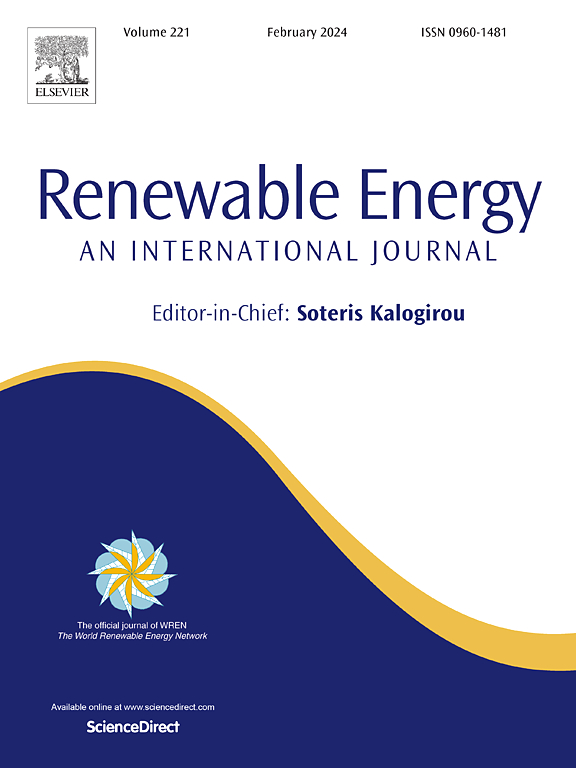利用数值气象模式评估风力估算的偏差校正方法
IF 9
1区 工程技术
Q1 ENERGY & FUELS
引用次数: 0
摘要
加强我们对影响可再生能源的气象因素的理解在能源转型中至关重要,因为广泛使用的气象数值模型的固有偏差降低了它们在准确模拟电力模型基本变量时的可靠性。本研究利用ERA5再分析、气象研究与预报模型(WRF)模拟和多个风速塔的实验数据,探讨了估算风电容量因子的五种偏差校正方法。受大尺度效应影响的地区,如大尺度大气环流与地形之间的相互作用,得到了精确再现;地形复杂的区域误差较大。在某些情况下,大尺度特征对近地面风施加的约束足够强,以至于不需要进行偏置校正。威布尔分位数映射和分位数百分位数方法产生的误差最低,但后者保留了双模态。平均状态、线性比例尺和分位数映射瑞利方法在检查的72%的病例中产生了最高的误差。对ERA5的分析揭示了其复制容量因子的能力依赖于站点周围的条件。偏差校正改变了概率分布的形状,通过其与功率曲线的相互作用显著影响CF估计。本文章由计算机程序翻译,如有差异,请以英文原文为准。

Evaluating bias correction methods for wind power estimation using numerical meteorological models
Enhancing our understanding of the meteorological factors influencing renewable energy is crucial in the energy transition, as inherent biases in widely used meteorological numerical models reduce their reliability in accurately simulating essential variables for electricity modeling. This study examines five bias correction methods for estimating wind power capacity factors, utilizing ERA5 reanalysis, Weather Research and Forecasting Model (WRF) simulations, and experimental data from multiple anemometric towers. Areas influenced by large-scale effects, such as the interaction between large-scale atmospheric circulation and orography, were accurately reproduced; however, regions with complex terrain exhibited larger errors. In some cases, the constraints imposed by large-scale features on near-surface winds are strong enough to make bias correction unnecessary. The Weibull quantile mapping and the quantile percentile method produced the lowest errors, however the latter preserved bi-modality. The mean state, linear scale, and quantile mapping Rayleigh methods produced the highest errors in 72% of the cases examined. Analysis of ERA5 revealed the dependence of its ability to reproduce the capacity factors on the conditions around the site. Bias correction alters the probability distribution’s shape, significantly impacting CF estimates through its interaction with the power curve.
求助全文
通过发布文献求助,成功后即可免费获取论文全文。
去求助
来源期刊

Renewable Energy
工程技术-能源与燃料
CiteScore
18.40
自引率
9.20%
发文量
1955
审稿时长
6.6 months
期刊介绍:
Renewable Energy journal is dedicated to advancing knowledge and disseminating insights on various topics and technologies within renewable energy systems and components. Our mission is to support researchers, engineers, economists, manufacturers, NGOs, associations, and societies in staying updated on new developments in their respective fields and applying alternative energy solutions to current practices.
As an international, multidisciplinary journal in renewable energy engineering and research, we strive to be a premier peer-reviewed platform and a trusted source of original research and reviews in the field of renewable energy. Join us in our endeavor to drive innovation and progress in sustainable energy solutions.
 求助内容:
求助内容: 应助结果提醒方式:
应助结果提醒方式:


